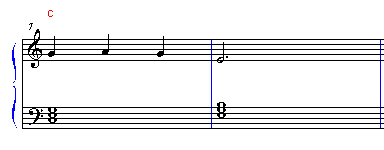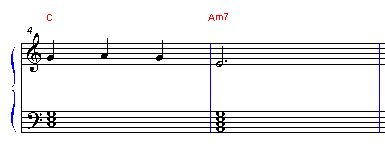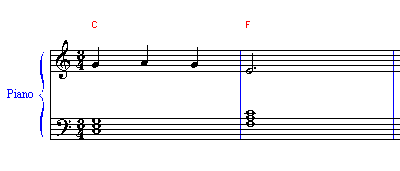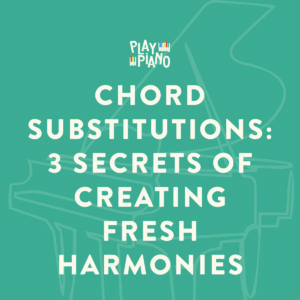Secrets of Exciting Chords & Chord Progressions: Lesson Thirty-Four
Chord Progressions Part 15:
“How To Create Unlimited Original Chord Progressions Using Chord Substitutions”
Chord Subs Technique #1: The “What Other Chord?” Technique
The “What Other Chord?” technique is one of the best ways to create a fresh harmonization of a familiar melody.
You simply ask yourself: “In to what other chord will this melody note fit?”
For example, the melody of Silent Night (if we play it in the key of C) goes like this:
G A G E
In the original score, the chord under this melody is C major. But are we obligated to keep the original harmony? Not at all. If we decide to go with C major on the first measure, we may want to change the chord in the 2nd measure just for variety. But to what chord?
That’s where our “What other chord?” technique comes in. We simply ask ourselves “Into what other chord will this melody note — namely E — fit?” Let’s see: In the C chord, E is the 3rd of the chord, so:
E is the root of the E chord, so we could try E, or Em, or Em7, or any other kind of “E” chord.

E is the 5th of the A chord, so we could try A, or Am, or Am7, or any other kind of “A” chord.

E is the 7th of the F chord, so we could try Fmaj7, or Fm/maj7, or F+/maj7, etc. — any F chord with an E in it.

E is the 9th of the D chord, so we could try D9, or Dm9, or any D chord with an E in it.
Get the idea?
Now watch the 6-minute video while I demonstrate the technique, and I think you’ll understand quickly:
Next issue we will demonstrate another chord substitution technique.
We have a great course available that goes into all this in great depth — we’ve just scratched the surface here — so if you’re interested, be sure and take a look at “Chord Substitutions!”




